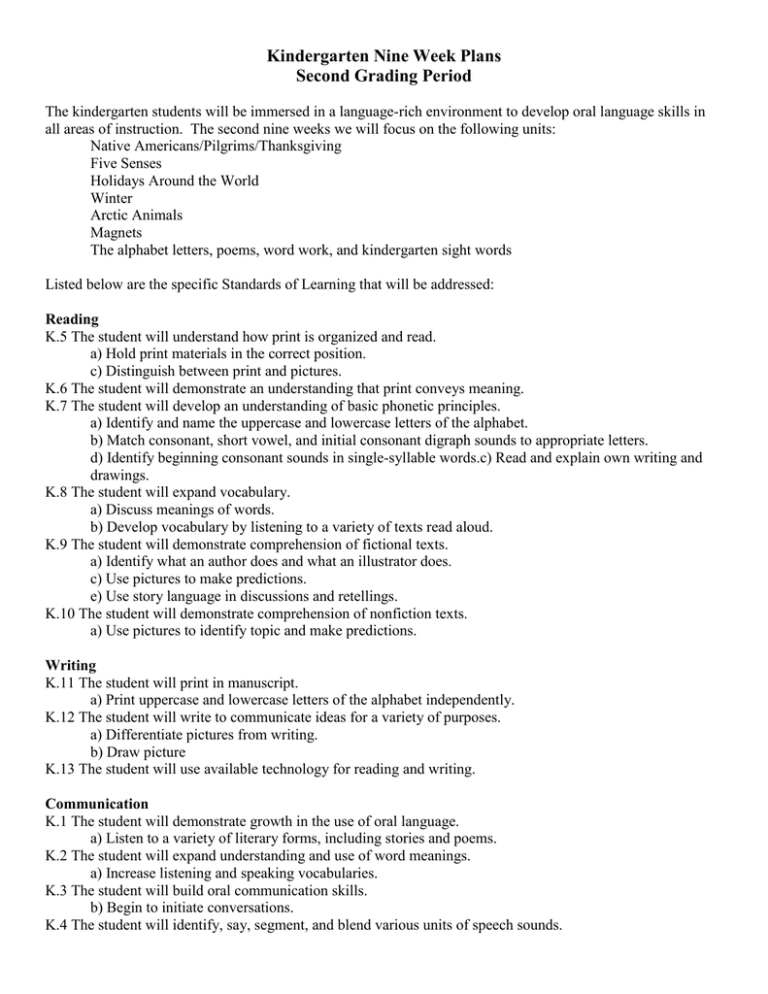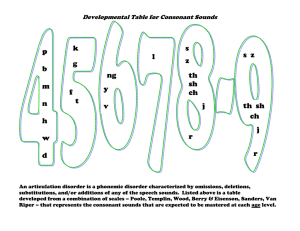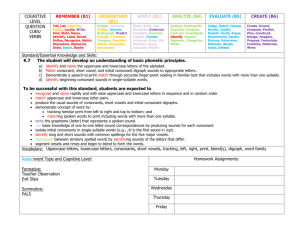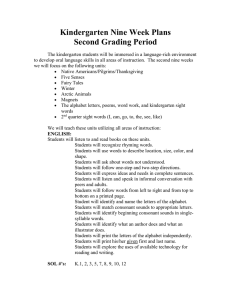Kindergarten Nine Week Plans Second Grading Period
advertisement

Kindergarten Nine Week Plans Second Grading Period The kindergarten students will be immersed in a language-rich environment to develop oral language skills in all areas of instruction. The second nine weeks we will focus on the following units: Native Americans/Pilgrims/Thanksgiving Five Senses Holidays Around the World Winter Arctic Animals Magnets The alphabet letters, poems, word work, and kindergarten sight words Listed below are the specific Standards of Learning that will be addressed: Reading K.5 The student will understand how print is organized and read. a) Hold print materials in the correct position. c) Distinguish between print and pictures. K.6 The student will demonstrate an understanding that print conveys meaning. K.7 The student will develop an understanding of basic phonetic principles. a) Identify and name the uppercase and lowercase letters of the alphabet. b) Match consonant, short vowel, and initial consonant digraph sounds to appropriate letters. d) Identify beginning consonant sounds in single-syllable words.c) Read and explain own writing and drawings. K.8 The student will expand vocabulary. a) Discuss meanings of words. b) Develop vocabulary by listening to a variety of texts read aloud. K.9 The student will demonstrate comprehension of fictional texts. a) Identify what an author does and what an illustrator does. c) Use pictures to make predictions. e) Use story language in discussions and retellings. K.10 The student will demonstrate comprehension of nonfiction texts. a) Use pictures to identify topic and make predictions. Writing K.11 The student will print in manuscript. a) Print uppercase and lowercase letters of the alphabet independently. K.12 The student will write to communicate ideas for a variety of purposes. a) Differentiate pictures from writing. b) Draw picture K.13 The student will use available technology for reading and writing. Communication K.1 The student will demonstrate growth in the use of oral language. a) Listen to a variety of literary forms, including stories and poems. K.2 The student will expand understanding and use of word meanings. a) Increase listening and speaking vocabularies. K.3 The student will build oral communication skills. b) Begin to initiate conversations. K.4 The student will identify, say, segment, and blend various units of speech sounds. a) Begin to discriminate between spoken sentences, words, and syllables. b) Identify and produce words that rhyme. d) Segment one-syllable words into speech sound units including beginning phoneme(s) (onset) and ending (rimes). e) Identify words according to shared beginning and/or ending sounds. Math K.1 The student, given two sets, each containing 10 or fewer concrete objects, will identify and describe one set as having more, fewer, or the same number of members as the other set, using the concept of one-to-one correspondence. K.2 The student, given a set containing 15 or fewer concrete objects, will a) tell how many are in the set by counting the number of objects orally; b) write the numeral to tell how many are in the set; and c) select the corresponding numeral from a given set of numerals. K.4 The student will a) count forward to 100 and backward from 10; b) identify one more than a number and one less than a number; and c) count by fives and tens to 100. K.7 The student will recognize a penny, nickel, dime, and quarter and will determine the value of a collection of pennies and/or nickels whose total value is 10 cents or less. K.9 The student will tell time to the hour, using analog and digital clocks. K.15 The student will sort and classify objects according to attributes. History/Social Science K.1 The student will recognize that history describes events and people of other times and places by a) identifying examples of past events in legends, stories, and historical accounts of Powhatan, Pocahontas, George Washington, Betsy Ross, and Abraham Lincoln; b) identifying the people and events honored by the holidays of Thanksgiving Day; Martin Luther King, Jr., Day; Presidents’ Day; and Independence Day (Fourth of July). K.2 The student will describe everyday life in the present and in the past and begin to recognize that things change over time. K.8 The student will demonstrate that being a good citizen involves a) taking turns and sharing; b) taking responsibility for certain classroom chores; c) taking care of personal belongings and respecting what belongs to others; d) following rules and understanding the consequence of breaking rules; e) practicing honesty, self-control, and kindness to others; f) participating in decision making in the classroom; g) participating successfully in group settings. K.9 The student will recognize the American flag and the Pledge of Allegiance and know that the president is the leader of the United States. Science K.2 The student will investigate and understand that humans have senses that allow them to seek, find, take in, and react or respond to information in order to learn about their surroundings. Key concepts include a) the five senses and corresponding sensing organs; and b) sensory descriptors used to describe common objects and phenomena. K.3 The student will investigate and understand that magnets have an effect on some materials, make some things move without touching them, and have useful applications. Key concepts include a) magnetism and its effects; and b) useful applications of magnetism.




